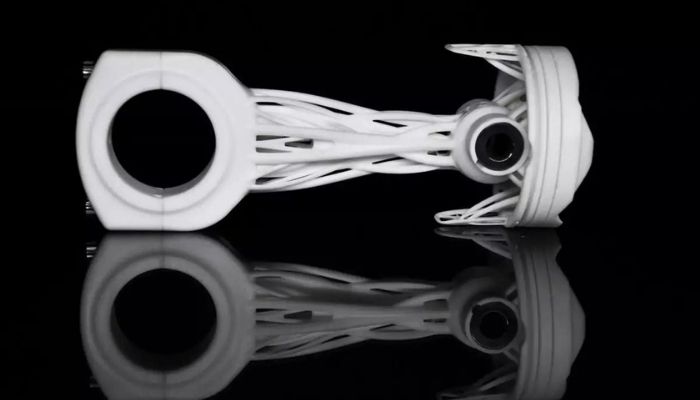BMW , Bugatti , Ford and Volkswagen – the list of automakers that have embraced additive manufacturing is probably endless. A wide variety of 3D-printed parts are used in the automotive industry manufactured anywhere in the world. Now the Greek body manufacturer Spyros Panopoulos Automotive (SPA) is following suit and is even presenting the world’s first 3D-printed engine piston. The car that goes with this engine piston, the “Chaos” model, is a so-called ultracar – an expensive, fast or powerful car with a centrally located engine. The body of the “Chaos” model is also 3D-printed from 78% titanium and magnesium alloys and carbon fibers.
A car that everyone dreams of: fast, well equipped and of course made thanks to additive manufacturing . The body parts of the luxurious ultracar were made using technology from the well-known Israeli 3D printing company XJet. It is therefore not surprising that this cooperation has now also extended to the production of the engine piston. The ceramic 3D-printed engine piston is said to be decisive for the key factors of speeds of over 500 km/h and acceleration from 0 to 100 km/h in just 1.55 seconds. If successful, it would mean that the 3D-printed engine piston would be among the fastest-revving production engines ever – at 3,065 hp.

The engine piston is made using ceramic 3D printing (Image: SPA)
3D printed engine piston and better properties with Anadiaplasi method
In order to be able to fully exploit the performance of the engine piston from the 3D printer, the “Anadiaplasi” method developed by Spyros Panopoulos Automotive was used. Specifically, this method is about the fact that the specific shape of the 3D printed part is based on the forces acting on it. Thus, a balance of material use is minimized in places that do not support the performance of the piston and, contrary to this, additionally supplemented in the other places. The advantages gained from this are obvious: the optimization of the weight of the additively manufactured part, while its strength and temperature resistance remain constant.
Together with XJet, a decision was made in favor of nanoparticle jetting, since the sophisticated design as well as the high level of accuracy and surface quality could be guaranteed. To also cover the factors of strength, hardness, minimized weight and resistance to thermal expansion, SPA chose XJet’s aluminum oxide material. The founder and namesake of the company, Spyros Panopoulos, explains in a statement why ceramics was specifically chosen to manufacture the engine pistons: “Ceramics offers many advantages compared to other materials. It is harder and stiffer than steel, more resistant to heat and corrosion than metals or polymers and weighs significantly less than most metals and alloys. XJet’s alumina parts will withstand the high temperatures expected in the combustion chamber as well as on the fast-moving parts.”
According to Panopoulos, the Greek company’s projects aim to boost the performance of the resulting cars, which forces them to be very selective about the technologies and materials used. ” I believe this is the first time ceramic AM has been used in motorsport and I feel privileged to be taking this pioneering step,” he adds with delight. If you want to know more about the ultracar with an amazingly powerful 3D printed engine piston, you can find more information HERE .
*Cover photo credit: SPA
More News



